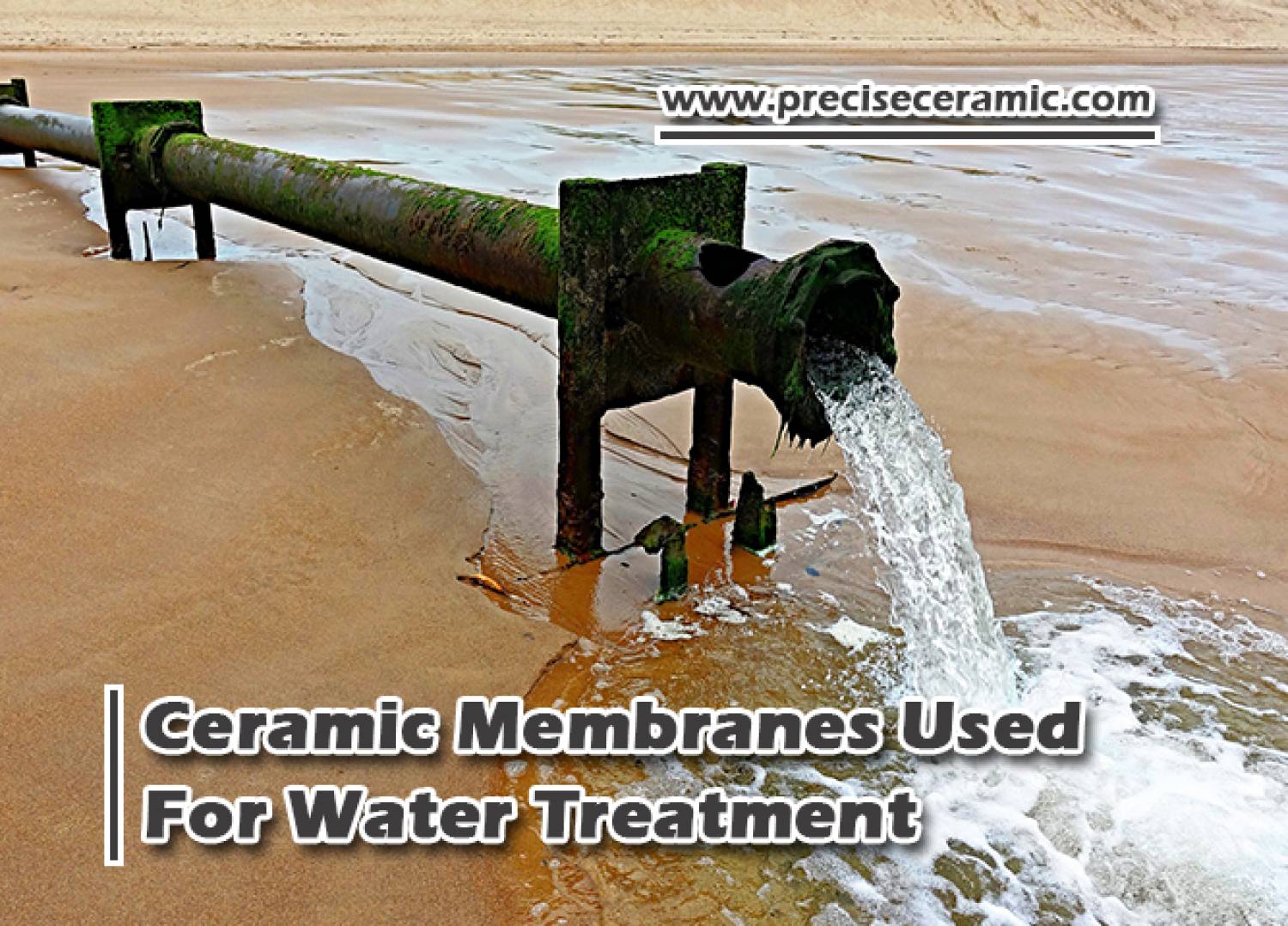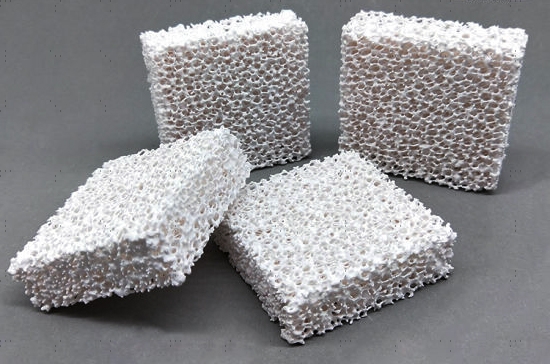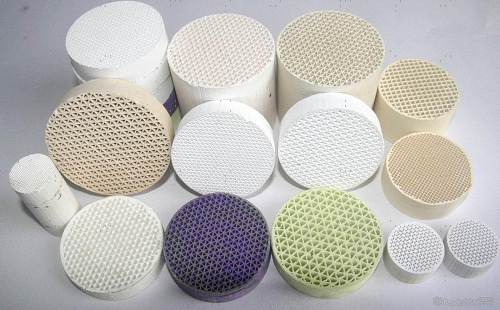Ceramic Membranes Used For Water Treatment

Wastewater has frequently been found to contain high quantities of organic waste, dangerous chemicals, such as metals (e.g. As, Pb, Cr, Cd, and Zn), toxic substances like endocrine disruptors, dyes, and a strong, pungent odor. Workers who come into direct contact with the contaminated water are sickened by emulsified and suspended contaminants from wastewater harboring bacteria like E. coli and salmonella, viruses like hepatitis, fungi like aspergillus, lariats like Giardia, and roundworms. There may be long-term and expensive health effects in some circumstances, especially with chronic exposure, such as lung and intestinal disorders and worsened asthma. Demands for wastewater treatment are on the rise. The methods for treating wastewater include both chemical and physical processes, such as coagulation, pH changes, antiscalants addition, and filtration (membrane and medium filtering).
What is Membrane Filtration?
The capacity to separate molecules of various sizes and properties characterizes the membrane filtration process which is a physical separation technique. The difference in pressure between two sides of a unique membrane serves as its driving power. Utilizing membrane technology, you may improve product quality while lowering total production costs. There are four forms of membrane filtration that are generally accepted. These are categorized according to the size of the particles that must be separated from the feed liquid. Reverse osmosis, nanofiltration, ultrafiltration, and microfiltration are the four different forms of membrane filtration, in order of increasing pore size.
Ceramic Microfiltration
Ceramic microfiltration uses ceramic filters (membranes) having a porosity of fewer than .05 microns to filter, separate, and purify wastewater for reuse in processes or safe discharge to sewers for recyclable results. Ceramic microfiltration has a crossflow design, in which a large portion of the feed flow moves tangentially across the filter's surface rather than through it.

Ceramic Membranes
Ceramic membranes are synthetic membranes from substances like Alumina, zirconia, or zeolite. They can endure high flux rates, pressures, and pH extremes. These features make it possible to clean the membranes effectively using acidic or alkaline solutions, making ceramic membranes the best choice for processing complex sludge-like effluent streams. Ceramic membranes can be employed in high-temperature procedures and separations when hostile media, such as acids and potent solvents, are present because of their great thermal stability. Each element has several channels with varying porosities (diameters) from 0.05 to 0.2 microns that allow feed water to pass through.
Advantages of Ceramic Membrane Filters
Ceramic membrane filters have many distinct advantages over more common traditional filters like Filter Press, Centrifuge, and DE Filter:
- They have excellent resistance to substances that cause oxidation and or acidity.
- The ceramic membrane has narrow pore-size dispersion and fine separability.
- They have a very extended working life.
- Because a typical ceramic membrane's rejection layer is often significantly thicker than that of polymeric TFC polyamide membranes, its water permeability is reduced.
- Due to their distinctive structure and outstanding thermal and chemical resilience, ceramic membranes have been extensively utilized for the treatment of hazardous waste, industrial wastewater, and oil/water separations.
Ceramic membranes are believed to be easy to clean and to have higher antifouling qualities. However, their prohibitive price has hindered their widespread industrial use.
Application of Ceramic Membrane Filters
- Ceramic membranes are used for sizing solutions recovery, washing effluents, water with inks from gum printing origin, and in dye baths.
- They are also used in alkaline baths from printed circuits and in black liquors.
- They have found significant application in coating effluent (effluent treatment), paper pulp bleaching effluent, and degreasing baths filtration.

What Conditions Must Be Met Before A Ceramic Membrane Can Operate?
Normal operating procedures must be followed when using and operating ceramic membranes. Because they could harm or destroy the tubular ceramic membrane, the following operating conditions and chemicals are strictly prohibited:
- Sudden pressure changes.
- 5°C/min of rapid temperature changes.
- Meeting with strong acids and alkalis at high temperatures and concentrations over an extended period, such as hydrofluoric acid, sulfuric acid, and hydrochloric acid.
- Combined with stainless steel housings, formic or acetic acid at high temperatures and concentrations, silicates, acrylics, varnish, silicon soil, resins, and wax.
- Using high viscosity liquid filtration or filtration of liquid containing big hard solid particles;
- Using pumps without a frequency converter or soft starter.
- Intentional striking or tripping.
Conclusion
The use of ceramic membranes for water purification is anticipated to increase in competitiveness in the future due to ongoing cost reductions and performance enhancements. For instance, using MOF might provide membranes with extremely competitive separation performance. Thank you for reading our article, and we hope it can help you to have a better understanding of ceramic membranes used for water treatment. Advanced Ceramic Materials (ACM) supplies high-quality ceramic powder and related products to meet our customers’ R&D and production needs. Please visit https://www.preciseceramic.com/ for more information.
{{item.content}}
LEVE A REPLY
{{item.children[0].content}}
{{item.content}}
LEAVE A REPLY
SUBSCRIBE OUR NEWSLETTER
- Boron Nitride in Cosmetics: Enhancing Performance and Sensory Appeal
- Maximize MOCVD Yield and Purity with Hexagonal Boron Nitride Setters
- What Are the Advantages and Uses of Boron Nitride Ceramic Sheet?
- The Compression Annealing Advantage for Pyrolytic Boron Nitride
- Beyond Insulation: The Surprising Spectrum of Ceramic Thermal Conductivity











